What is cardiovascular disease? How can it be prevented?
As the weather gets colder.Cardiovascular disease, strokeThe number of elderly patients is also increasing, and the peak of sudden cardiovascular deaths occurs from November to March each year.
Zhou Yong, Director of Cardiovascular Medicine, Huarong County People's HospitalINTRODUCTION: Since the temperature drop, the department admitted patients with coronary heart disease and acute myocardial infarction increased significantly.
Because the body of cardiovascular and cerebrovascular patients is stimulated by cold air, blood vessels suddenly contract, easily leading to vascular obstruction, interruption of blood supply, blood circulation is blocked, so that the toxic substances in the blood vessels are not easy to be discharged, thus inducing the onset of cardiovascular and cerebrovascular diseases and relapses.

case (law)
Mr. Cai, 75, with a past history of hypertension, was on his way out to buy groceries early in the morning when he had a suddenChest tightness, chest painCollapsed, family members called EMS and were transported to the hospital, where he was admitted to cardiovascular medicine and diagnosed withCoronary heart disease, acute myocardial infarction。
Ms. Zou, 73 years old, with a past history of hypertension, after nightfall, sudden chest tightness, palpitations, shortness of breath, profuse sweating, after resting the symptoms did not ease, 10 hours later, her family sent Ms. Zou to the hospital, admitted to the hospital for examination, diagnosed asAcute left heart failure。
Gong Wenshu, Head Nurse, Department of NeurologyReminder: cerebrovascular morbidity is commonly concentrated between the hours of 9:00 PM and 5:00 AM.
The low temperature and low light at night make it easy for accidents to happen. There are many patients who develop illnesses at night when they go to the toilet. Therefore, it is all the more important for families to pay attention to accompanying the elderly when they get up at night.
Cardiovascular disease isOlder persons over 50 years of ageA common disease that has aHigh prevalence, disability and mortality ratesThe characteristics of cerebrovascular accidents are such that even with the application of the most advanced treatments available, more than 50% of survivors of cerebrovascular accidents are still unable to take care of themselves completely.
Cardiovascular diseases account for 15 million deaths worldwide each year, ranking first among all causes of death.。
Zhou Yong, Director, Department of Cardiovascular Medicine; Zhao Yi, Deputy Director, Department of NeurologyReminder: family with the elderly to pay more attention to the occurrence of cardiovascular disease in winter, prevention can start from the following aspects:

1. Prevent embolism.
Blood vessels, especially coronary arteries, are prone to contraction and spasm in the winter cold, resulting in insufficient blood supply and potentially leading to embolism, so it is important to pay close attention to keeping warm. If necessary, use anti-thrombotic drugs under medical supervision.
2. Patients should not exercise in the morning.
Because when you sleep, the human body, the human body's nervous system is in a state of inhibition, lack of vitality, suddenly and drastically exercise when you get up in the morning, nerve excitability suddenly increased, very easy to induce cardiovascular and cerebrovascular diseases, winter should pay attention to this problem.
3, supplementation should be moderate.
China's folk have the habit of winter tonic, winter people's movement was less, plus a lot of tonic hot food and tonic wine, it is easy to cause high blood fat, induced cardiovascular and cerebrovascular diseases.
Therefore, winter tonic must be based on the individual's constitution.Eat plenty of vegetables & fruits and monitor blood sugar changes.
4. Balance of mind.
Emotional excitement is a taboo for cardiovascular disease, coronary heart disease, hyperlipidemia patients, in particular, should be relaxed.Don't let emotions rise and fall too much.
5. Proper exercise.
Cardiovascular and cerebrovascular patients are not unable to exercise, but to exercise appropriately, and reduced exercise will also cause slow blood flow and elevated blood lipids. It is necessary to reasonably arrange the exercise time and control the amount of exercise.
In winter, we should wait for the sun to rise before going to exercise, at this time, the temperature rises, can avoid the body suddenly by the cold stimulation and the onset of disease.
6, there is a history of angina pectoris, coronary heart disease history of patients, should always have nitroglycerin, fast-acting heart pills and other drugs, the onset of the immediate sublingual sublingual, pay attention to lie down and rest, keep the mood stable, and timely delivery of medical care.

(Web image, for reference only)
Hunan Medical Chat Guest Q&A by Zhang Bei, Hualong County People's Hospital
Cardiovascular and cerebrovascular disease is a collective term for cardiovascular and cerebrovascular diseases, which refers to ischemic or hemorrhagic diseases of the heart, brain, and tissues of the whole body due to hyperlipidemia, blood viscosity, atherosclerosis, and high blood pressure.
Preventing the Four Risk Factors
1. Overweight
Excessive intake of saturated fatty acids and excess unsaturated fatty acids can lead to overweight and hypertension
2. Protein deficiency
3. Lack of dietary fiber
Only dietary fiber was negatively associated with hypertension, i.e., increased dietary fiber intake prevented hypertension. It has been reported that increasing the daily intake of fruits and vegetables can reduce the risk of stroke. It is advocated to consume more cereals, less sweets and candies, and more coarse grains, vegetables, fruits and other foods high in dietary fiber.
4. Hazards of salt
From the perspective of cardiovascular disease prevention, it is still important for people to eat as lightly as possible and gradually reduce the amount of salt they use until they don't add salt to their food in particular.
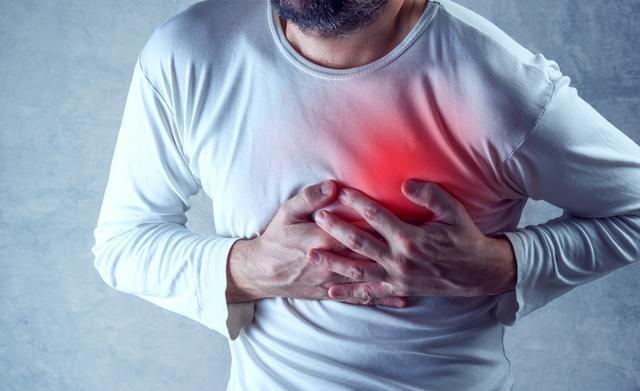
Cardiovascular and cerebrovascular diseases, broadly defined as cardiovascular and cerebrovascular diseases, mainly include coronary heart disease and stroke (ischemic stroke and hemorrhagic stroke).
According to the China Cardiovascular Disease Report 2017, China's cardiovascular disease prevalence and mortality rate is still in a continuous rising stage, with the mortality rate topping the list of all causes of disease, accounting for more than 40% of the composition of the population's disease deaths. Among them, 13 million were strokes and 11 million were coronary atherosclerotic heart disease (CHD). Ischemic stroke and transient ischemic attack (TIA) are the most common types of cerebrovascular disease, and nearly 70% of patients with subtypes of stroke in China have ischemic stroke. Coronary heart disease (CHD) is the result of a combination of multiple cardiovascular risk factors, including non-modifiable factors such as age and gender, and modifiable factors such as dyslipidemia, hypertension, diabetes mellitus and smoking.
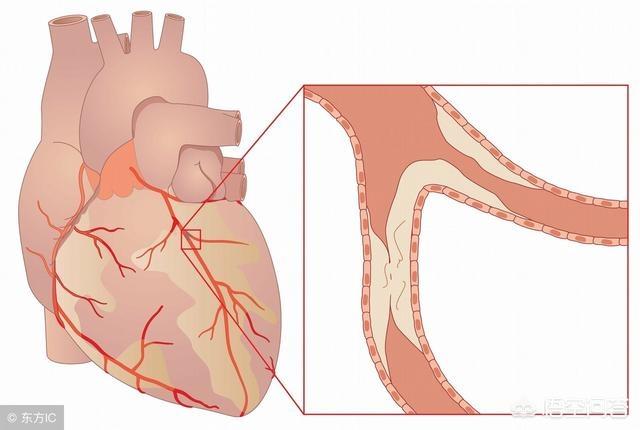
Good prevention of cardiovascular and cerebrovascular diseases mainly includes improvement of poor lifestyle and drug control. Improvement of poor lifestyle mainly includes smoking cessation (non-smoking or quit smoking for more than 12 months), weight control (BMI<25), appropriate moderate-intensity physical activity (half an hour a day, more than 5 times a week), comprehensive and balanced diet (more fruits and vegetables, less animal offal), and no overeating. Pharmacological control includes medication to control blood pressure, blood lipids, blood glucose, make sure that the above indicators to meet the standard, eligible for the use of aspirin anti-platelet aggregation.
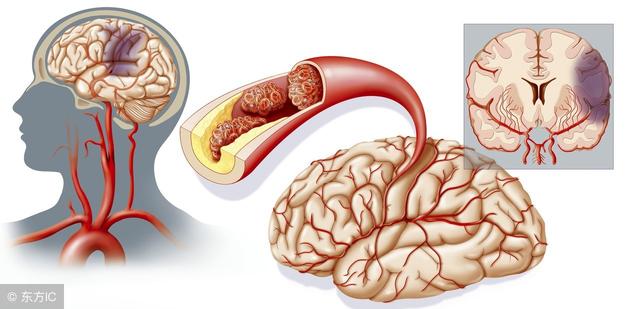
A recent study published in Science China: Life Sciences found that about 60.5% of coronary heart disease and stroke deaths among adults over 20 years of age in China were attributed to smoking, body mass index, physical activity, healthy diet, blood pressure, total cholesterol, and fasting blood sugar. So be sure to improve your poor lifestyle and bring your blood pressure, blood sugar and lipids up to par.
Cardiovascular diseases are caused by insufficient blood supply to the heart and brain due to narrowing of arteries caused by atherosclerosis
Patients are advised to quit smoking and limit alcohol, avoid staying up late, exercise appropriately, and take low-salt, low-fat, low-sugar, high-calcium, and high-fiber as the dietary principles; pharmacological interventions mostly refer to the prevention of risk factors, including the control of blood pressure, glucose, lipids, and homocysteine. Patients with atrial fibrillation take oral anticoagulants, choosing warfarin and new anticoagulants according to their condition.
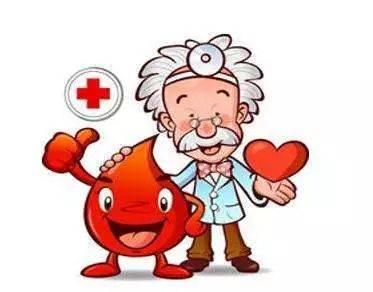
Cardiovascular disease is the collective term for diseases of the blood vessels of the heart and the blood vessels of the brain.
Coronary artery atherosclerosis is a heart disease caused by narrowing or occlusion of the blood vessel lumen, resulting in myocardial ischemia, hypoxia or necrosis, referred to as coronary heart disease. Coronary heart disease is a common and frequent disease among middle-aged and elderly people, some patients may have no clinical symptoms, and those who have symptoms mainly manifest as chest tightness, chest pain, palpitation, dyspnea and so on. Coronary heart disease patients should take long-term medication. Coronary heart disease is the most common type of atherosclerosis leading to organ lesions, in recent years the incidence of a younger trend, has become a threat to human health as one of the main diseases.
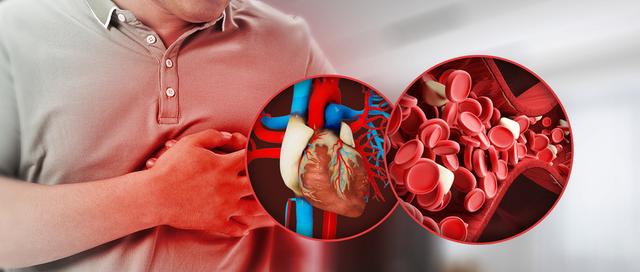
Male onset earlier than female, hypercholesterolemia, hypertension, diabetes mellitus, long-term smoking and obesity is the high incidence of people, exercise, emotional excitement, neurological factors, etc., can make the coronary blood supply and myocardial oxygen demand contradiction between the coronary artery, coronary artery blood flow can not meet the myocardial metabolism, will cause myocardial ischemia ischemia and hypoxia. Temporary ischemia and hypoxia cause angina pectoris, and sustained severe myocardial ischemia can cause myocardial necrosis that is myocardial infarction.
typical symptom
① Stable angina
Paroxysmal crushing pain or suffocating sensation in the anterior chest, mainly located in the posterior part of the sternum, which may radiate to the shoulder and ulnar side of the left upper extremity, often occurs during exertion, emotional excitement, satiety and other increased labor loads, the pain lasts from a few minutes to more than 10 minutes, most often 3-5 minutes, and is relieved within a few minutes by resting or sublingual nitroglycerin. The degree, frequency, duration, nature and triggering factors of the pain episodes did not change significantly over several months.
② Hidden coronary heart disease
There are no clinical signs of angina pectoris, but an objective basis for myocardial ischemia is shown by performing a resting, dynamic, or load test electrocardiogram.12. There are three types:
Objective evidence of myocardial ischemia on electrocardiogram without angina symptoms.
History of myocardial infarction with objective evidence of existing myocardial ischemia without symptoms.

There are episodes of myocardial ischemia, sometimes symptomatic, sometimes asymptomatic.
① Ischemic cardiomyopathy
It belongs to the advanced stage of coronary heart disease, which is caused by long-term ischemia due to coronary atherosclerosis, leading to diffuse myocardial fibrosis, producing heart failure, arrhythmia and other manifestations. The manifestations are chest pain, chest tightness, fatigue, palpitations, exertional dyspnea, sedentary breathing or nocturnal paroxysmal dyspnea, ventricular premature beats, atrial fibrillation, bundle branch conduction block and other arrhythmias.
② Unstable angina and non-ST-segment elevation myocardial infarction
It is due to atherosclerotic plaque rupture or erosion, accompanied by varying degrees of thrombosis, vasospasm and distal vascular embolism, often manifested as chest pain, chest tightness, palpitations, dyspnea, etc., the degree of stable angina pectoris is heavier, the duration of a longer period of time, up to dozens of minutes, chest pain can also occur at rest, routine rest or sublingual nitroglycerin can only be temporary or even can not completely alleviate the symptoms.
③ Acute ST-segment elevation myocardial infarction
It is a dramatic reduction or interruption of coronary blood supply that occurs on top of coronary artery disease.
④ Coronary heart disease caused by neurological factors
It is caused by severe chronic ischemia of the myocardium due to severe contraction and occlusion of the tiny arteries emanating from the coronary arteries that nourish the myocardium by nerve stimulation.
Cerebrovascular disease (cerebrovascular disease), refers to a wide range of diseases of the blood vessels of the brain, including cerebral atherosclerosis, thrombosis, stenosis, occlusion, cerebral arteritis, cerebral artery injury, cerebral aneurysm, intracranial vascular malformation, cerebral arteriovenous fistulae, and so on, whose common characteristic is to cause ischemic or hemorrhagic accidents of the brain tissues, which lead to disability or death of patients.
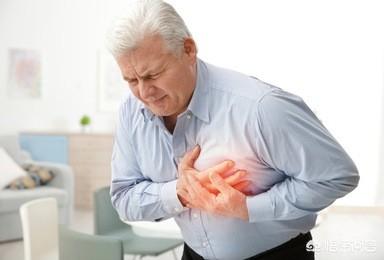
Common symptoms of cerebrovascular disease are:
(1), sudden distortion of the mouth and eyes, salivation at the corners of the mouth, difficulty in speaking clearly and spitting out words, aphasia or dysarthria, difficulty in swallowing, and weakness or inflexibility of one side of the limb.
(2), sudden onset of severe headache, dizziness, and even nausea and vomiting.
(3), numbness of face, tongue, lips and limbs.
(4), impaired consciousness, manifested by mental depression, lethargy all day, and an uncharacteristic personality.
(5), generalized fatigue, weakness, sweating, low-grade fever, chest tightness, palpitations and so on. The above symptoms may not be manifested in every patient, as long as there are precursor symptoms are the alarm of stroke in middle-aged and elderly people should be particularly vigilant.
The causative risk factors associated with cerebrovascular disease are:
1. Age.
2. Persistent high blood pressure.
3. Heart disease.
4. Diabetes.
5. Atherosclerosis, high cholesterol and high blood lipids.
6. Smoke inhalation.
The prevention of cerebrovascular disease and its research have attracted increasing attention. At present, the effect is more certain to prevent and control high blood pressure. In addition, reasonable dietary control to effectively control high blood lipids, smoking cessation, control of diabetes mellitus and heart disease, and maintenance of regular and appropriate physical exercise and physical labor to prevent the progression of atherosclerosis also have certain positive significance.
How to prevent it?
Prevention of cardiovascular disease is mainly about preventing external causes, but it is not possible to prevent individual causes, hereditary or familial causes.

The so-called prevention is to prevent some risk factors, for cardiovascular and cerebrovascular diseases have some common risk factors, such as hyperlipidemia, hypertension, diabetes, obesity, smoking and other conditions, so if you want to prevent cardiovascular and cerebrovascular diseases, you have to prevent these risk factors.
Preventing these risk factors requires the following:
First, reasonable diet, promote light, high protein diet, nutritional balance, avoid fat, sweet and thick taste, overeating;
(b) Control of systemic underlying diseases, such as hypertension and diabetes mellitus;
Third, strengthen exercise, adhere to long-term moderate, exercise, weight control, enhance resistance, while changing bad habits, quit smoking and alcohol;
Fourth, regular medical checkups, regular annual medical checkups at regular medical institutions, and appropriate examinations to prevent problems before they occur.
▼ Follow me into the life of a clinician!
-Dr.X-
An M.D., surgeon, and father of three.
Author of Learning to See
Bringing you health and parenting tips with attitude and warmth.
Follow me for a little more health every day

Cardiovascular and cerebrovascular accidents are a common disease that poses a serious threat to the health of human beings, especially middle-aged and elderly people over 50 years of age. Even with the application of the most advanced and perfect treatment, more than 50% of the survivors of cerebrovascular accidents are still unable to take care of themselves.
The number of people who die of cardiovascular and cerebrovascular diseases worldwide is as high as 15 million per year, ranking first among all causes of death. Cardiovascular and cerebrovascular diseases have become the highest cause of death of human beings, the number one killer, but also people's health "silent murder"!
The main cause of cardiovascular disease is the smooth muscle cells of the blood vessel wall abnormal metabolism caused by the blood vessel tissue and other tissues of the human body in a certain cycle to complete the metabolic process, but due to the formation of new cells and tissues can not be formed normally, so that the blood vessel wall itself there are "defects" and therefore prone to inflammation vascular contraction is not smooth, like a broken old pipe. It is like a broken old pipe, which may be blocked or ruptured at any time. Blood vessels are important channels for blood flow, but they are also governed by the nervous system, so abnormalities in the nervous system can also lead to disturbances in the blood supply.
secondary cause
Moreover, due to the problem of long-term dietary habits, there are too many lipids and too many alcohols in the diet. At the same time, there is no reasonable exercise to promote the metabolism of lipids and alcohols, resulting in a gradual increase in the body's lipids and alcohols; coupled with age, the body's secretion of antioxidant enzymes (e.g., superoxide dismutase SOD) ability to reduce the body's level of free radicals, so that the oxidation of lipids in the LDL cholesterol is deposited in the vascular wall, and over time the capillaries are blocked, and over time, the lipid alcohols are easily combined with free mineral ions to form thrombosis, resulting in cardiovascular and cerebrovascular diseases. With the passage of time, lipids and alcohols are easily combined with free mineral ions in the body to form blood clots, resulting in cardiovascular and cerebrovascular diseases.
What are the symptoms of cardiovascular disease
Cardiovascular diseases, such as symptoms of coronary heart disease (including angina pectoris and myocardial infarction):
Tightness, palpitation, restlessness, shortness of breath; irregular heart rate; chest pain, pain behind the sternum or in the anterior region of the heart; tightness of breath, fainting, weakness, belching; stabbing pain in the chest, fixed and immovable, into the night
Worse; angina pectoris of coronary artery disease with purple tongue and sunken stringy pulse as the main symptoms, insufficient blood supply to coronary artery; epigastric pain, nausea, vomiting; pain in the left back, pain in the left arm.
Cerebrovascular disease, such as symptoms of ischemic stroke (including cerebral thrombosis, cerebral embolism, etc.):
Hemiparesis, hemiplegia, hemianopsia, hemianopsia, aphasia. Or crossed paralysis, crossed sensory disorder, external ophthalmoplegia, nystagmus, dysphagia, ataxia, vertigo.
Weakness and numbness of the limbs, sensory disturbances in the face, upper and lower limbs; inflexibility of unilateral limb movements; speech disorders, poor speech; memory loss; sudden lack of clarity in seeing objects;
Inflexible eye rotation; urinary incontinence; balance disorders and unsteadiness; impaired consciousness; headache or nausea and vomiting; dizziness and ringing in the ears.
Blood pressure should be kept stable. It is best to measure your blood pressure twice a day, in the morning and in the evening, and adjust your treatment medications if your blood pressure is too high or too low. Mental relaxation. Whether you encounter happy things or sad things, you should face them with a calm mind.
Physical exercise should be moderate. Exercise should not be excessive, and should be stopped immediately when a slight sweat breaks out on the forehead.
Diet should be scientific and reasonable. It is important to eat plenty of fresh fruits and vegetables to control the blood viscosity of the organism and prevent the formation of blood clots.
Do not lift excessively heavy objects. Inevitably bending over and taking deep breaths while lifting heavy objects is a common cause of myocardial infarction.
Do not bathe in water that is too hot. Water that is too hot can cause the skin blood vessels to dilate significantly and a large amount of blood to flow to the surface of the body, resulting in myocardial ischemia.
Don't catch a cold. In addition to adding clothing in a timely manner, sleep with the windows closed at night and don't let the cold outside air blow into the room.
Do not give first aid blindly. In the event of a heart attack, keep the patient in place and do not shake the patient.
cardiovascular disease, which is a collective term for cardiovascular and cerebrovascular diseases.It is the manifestation of systemic or systemic vascular disease in the heart and brain. Cardiovascular and cerebrovascular diseases are highly prevalent in the middle-aged and elderly population, with high morbidity, mortality and disability rates, seriously threatening the life and health of human beings.
What is cardiovascular disease? How can it be prevented?
At present, cardiovascular and cerebrovascular diseases are still the "number one killer" of human health, and the incidence rate is increasing year by year. Moreover, even after treatment, patients with cardiovascular and cerebrovascular diseases often have serious after-effects, which makes them unable to take care of themselves and reduces their quality of life. The prevention of cardiovascular and cerebrovascular diseases should be started from the daily life.
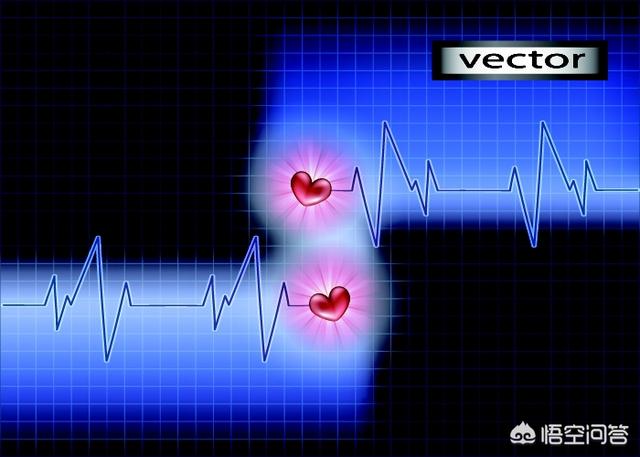
1. Cardiovascular diseases:Includes cardiovascular and cerebrovascular diseases.
①Cardiovascular disease is a series of diseases involving the circulatory system, including the heart and blood vessels, mostly related to atherosclerosis. They include underlying diseases such as hypertension and hyperlipidemia, as well as coronary heart disease, myocardial infarction and angina pectoris.
② Cerebrovascular disease is a disease induced by blockage or rupture of cerebral blood vessels due to various reasons. Commonly, they are strokes, including ischemic strokes and hemorrhagic strokes, i.e., cerebral infarction and cerebral hemorrhage.
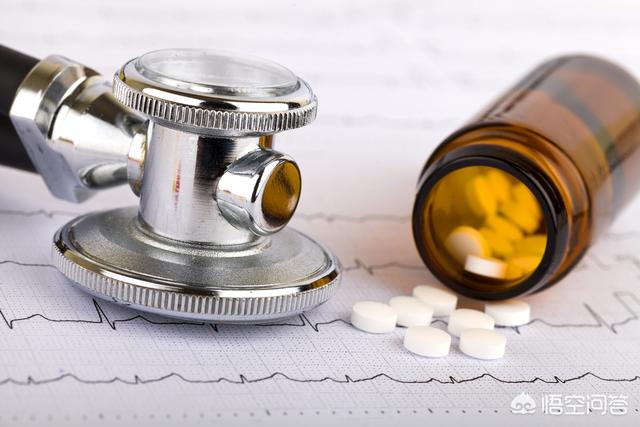
2. Prevention of cerebrovascular diseases:This includes lifestyle interventions and aggressive allopathic treatment.
① Blood pressure and lipid management:To prevent cardiovascular and cerebrovascular diseases, controlling blood pressure and blood lipids is the key. High blood pressure will cause damage to the endothelium of blood vessels and accelerate the accumulation of lipids, while high blood lipids are the culprits leading to atherosclerosis. As high risk factors for cardiovascular and cerebrovascular diseases, both must be actively prevented and treated. Patients with related diseases should pay attention to follow the doctor's instructions to actively carry out the treatment, adhere to the long-term use of drugs, do not arbitrarily stop or reduce the drug.
② Lifestyle interventions:High-risk groups should pay attention to develop good living habits, diet attention to low-fat, low calorie, low salt, eat less animal food, fried food, more fruits and vegetables, coarse grains, etc., avoid overeating, overfeeding; aerobic exercise, adhere to the daily exercise of 30min, to develop good habits; pay attention to maintain a good state of mind, avoid anxiety, anger and other bad emotions; pay attention to the combination of work and leisure, regular work and rest, do not want to stay up late, overworked. Stay up late, overwork, etc.
③ Regular medical checkups:In particular, patients with three highs, middle-aged and elderly groups, etc., must pay attention to regular medical checkups, so as to detect potential threatening factors in time and treat them at the first time.
Cardiovascular and cerebrovascular disease is a collective term for cardiovascular and cerebrovascular diseases, which refers to ischemic or hemorrhagic diseases occurring in the heart, brain, and tissues of the whole body due to hyperlipidemia, blood viscosity, atherosclerosis, and high blood pressure. Cardiovascular and cerebrovascular diseases is a serious threat to human beings, especially the health of middle-aged and elderly people over 50 years old, with high prevalence, high disability rate and high mortality rate, even if the application of the most advanced and perfect means of treatment, more than 50% of the survivors of cerebrovascular accidents can not be completely self-care, the world's annual deaths from cardiovascular and cerebrovascular diseases is as high as 15 million people, ranking first in the causes of various deaths. The number of deaths from cardiovascular and cerebrovascular diseases is as high as 15 million per year worldwide, ranking first among all causes of death.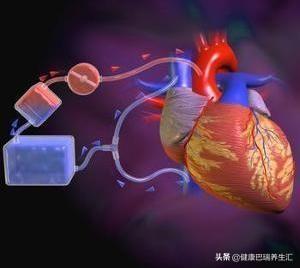
There are seven associated risk factors:
1. High blood pressure
Prolonged high blood pressure can make the walls of arterial blood vessels thicken or harden and the lumen become thin, which in turn affects the blood supply to the heart and brain. High blood pressure can make the heart load heavier, prone to left ventricular hypertrophy, further leading to hypertensive heart disease and heart failure. When the blood pressure rises suddenly, the cerebral blood vessels are prone to rupture and brain hemorrhage occurs; or has been hardened small arteries in the brain to form a kind of chestnut-sized micro-aneurysm, when the blood fluctuation micro-aneurysm rupture and cause brain hemorrhage; or hypertension accelerates the process of atherosclerosis, the arterial endothelial cells are damaged, platelets are prone to gather in the injured place, and easy to form blood clots, triggering myocardial infarction or cerebral infarction.
2. Blood viscous
The rhythm of modern life is tense, family, career pressure is increasing, people's emotions are more and more unstable; at the same time, excessive alcohol consumption, intake of too much food fat, the lack of necessary exercise, coupled with the pollution of the living environment, the negative ion content in the air has dropped sharply, the intake of negative ions into the body is also insufficient, these factors directly lead to the human body metabolism slows down, the blood flow rate will be slowed down, the blood viscosity is quickly Elevated, resulting in insufficient blood supply to the heart and brain, if not timely prevention, conditioning, will trigger coronary heart disease, hypertension, cerebral thrombosis and other cardiovascular and cerebrovascular diseases.
3. smoking
Smokers have a much higher morbidity rate than non-smokers. Among those who smoke more than 20 cigarettes a day, the incidence of coronary heart disease is 3.5 times higher than that of non-smokers, the mortality rate of coronary heart disease and cerebrovascular disease is 6 times higher than that of non-smokers, and subarachnoid hemorrhage is 3 to 5.7 times higher. Among the risk factors of cerebral infarction, smoking occupies the first place. Niacin can promote the plasma epinephrine content increases, promote platelet aggregation and endothelial cell contraction, cause the blood viscosity factor increases.
4. Abnormal metabolism of vascular wall smooth muscle cells
Vascular tissue and other tissues of the human body in a certain cycle to complete the metabolism. In the process of metabolism of smooth muscle cells in the blood vessel wall, if new cells and tissues cannot form normally, so that the blood vessel wall itself has "defects", it is easy to make the blood vessel contraction and relaxation is not smooth, like a broken old pipe, at any time there is the possibility of blockage or rupture. Blood vessels are important channels for blood circulation, and they are also governed by the nervous system, so abnormalities in the nervous system can also lead to disturbances in blood supply. Therefore, the causes of cardiovascular and cerebrovascular diseases are multifaceted.
5. Alcoholism
Alcohol intake has a direct dose-related effect on hemorrhagic stroke. Those who consume more than 50 grams of alcohol per day have an increased risk of cardio-cerebral infarction. Prolonged heavy drinking increases blood platelets, which in turn leads to poor blood flow regulation, arrhythmias, hypertension, hyperlipidemia, and makes cardiovascular disease more likely to occur. Small amounts of alcohol are beneficial and large amounts are harmful.
6. Diabetes
Diabetes mellitus is an independent risk factor for heart disease or ischemic stroke, and with the progression of diabetes mellitus, various types of cardiovascular and cerebrovascular complications, such as coronary atherosclerosis, cerebral infarction, and formation of atherosclerotic plaques of the lower limbs, will gradually appear.
7. Other
For example, obesity, insulin resistance, increasing age, gender (higher incidence in men than women), race, and genetics are all risk factors associated with cardiovascular disease.
Cardiovascular and cerebrovascular disease is a collective term for cardiovascular and cerebrovascular diseases, which refers to ischemic and hemorrhagic diseases that occur in the heart, brain, and tissues throughout the body due to hyperlipidemia, blood viscosity, atherosclerosis, and high blood pressure.
Cardiovascular disease is a common disease that seriously threatens the health of human beings, especially middle-aged and elderly people over 50 years old, and is characterized by high prevalence, high disability and high mortality rates, even if the most advanced and perfect treatment means are applied.
More than 50% of survivors of cerebrovascular accidents are still unable to take care of themselves. Cardiovascular diseases account for 15 million deaths worldwide each year, ranking first among all causes of death.
The etiology of cardiovascular disease is divided into two categories: intervenable and non-intervenable factors, where non-intervenable factors, such as age, gender, and race, are not preventable.
Intervenable factors such as hypertension, diabetes, hyperlipidemia, obesity, smoking, and alcohol consumption can be prevented. Prevention methods are as follows:
1. Regulate blood pressure and blood sugar to keep them within the ideal range;
2. Quit smoking, limit alcohol, and exercise appropriately;
3, obese patients control diet, reduce weight, appropriate exercise;
4, hypertensive patients are recommended to low-salt, low-fat diet; diabetic patients are recommended to reduce sugar intake, eat less starch-rich foods, such as rice, steamed bread, etc., eat more vegetables, control the consumption of fruits.
The prevention of cardiovascular and cerebrovascular diseases is of great clinical importance. The incidence of cardiovascular and cerebrovascular diseases can be minimized through active prevention and intervention of risk factors.
:: 1. Low-salt, low-fat diet. Daily sodium intake should not exceed six grams. If the patient has high blood pressure should not exceed three grams per day.
2、Avoid exertion, quit smoking and drinking, and keep a good mood
3. Exercise moderately and control your weight. Keep the body mass index within 24, otherwise you are overweight.
4. People over the age of fifty can take 100 milligrams of oral aspirin enteric-coated tablets daily to prevent cardiovascular blockage.
5. Have regular medical check-ups. Including blood tests, electrocardiograms and neck vascular examinations
This question and answer are from the site users, does not represent the position of the site, such as infringement, please contact the administrator to delete.